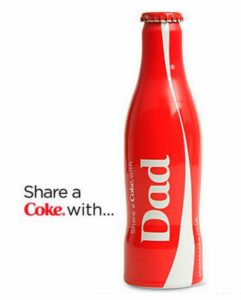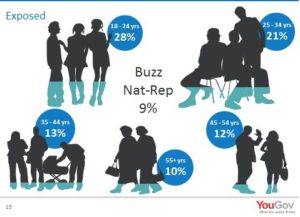Case study: What brands can learn from the integrated Share a Coke campaign of 2013
Summer 2013 saw Coca-Cola replace its iconic branding with 150 of the UK’s most popular names for its multimedia Share a Coke campaign, which produced some impressive results. But just what can other brands learn from it? Market research company YouGov shares the secrets of Coke’s winning campaign.
Last summer saw a flurry of activity down the supermarket drink aisles – adults and children alike scrambled through stacks of Coca-Cola, all eager to grab a bottle bearing their name. It seemed like almost everyone was sucked in by the Share a Coke campaign which exploded across Facebook, Twitter and TV advertising.
This unique and innovative approach to personalisation triggered research firm YouGov to roll out a study to ascertain just how and why Share a Coke was so successful and what other brands can take away from this success.
Background to the campaign Share a Coke, created by Ogilvy & Mather Sydney, launched in Australia in 2012. The integrated campaign was launched in Britain on 29 April 2013 and ran until the end of the summer. The soft drink giant replaced its usual branding with 150 of the UK’s most popular names. It was a multimedia effort, with TV adverts, billboards, and experiential marketing in the form of Coca-Cola ‘tours’ where participants could have their own custom bottle made. Each bottle also carried the hashtag #shareacoke to encourage users to share bottles with their names, as well as those of friends and family, using social media.
Reasons behind the research YouGov decided to study its progression and impact with UK consumers for a number of reasons. Firstly, it was already tracking Coca-Cola and its sub-brands, Diet Coke and Coke Zero, using its consumer perception tool. Second, YouGov was drawn by the dynamic nature of the campaign, and how it cut across multiple mutually-reinforcing mediums, including TV, Twitter and Facebook. Finally, Share a Coke’s innovative approach to personalisation made it a fascinating prospect.
Analysis strategy YouGov used connected data to combine actual (rather than claimed) advertising exposure with daily brand perception data to understand the impact of the advertising campaign, and which elements were most effective.
Actual exposure came from panellists who completed daily media consumption surveys, allowing YouGov to access to their social media feeds and let it track their web behaviour. Brand perception came from its daily BrandIndex survey – monitoring views on over 900 brands across 15 metrics each day.
Combining the two meant YouGov could accurately assess the impact of the campaign and understand the impact of each element. In this case it looked at the impact of TV, Twitter and Facebook by taking those exposed on each platform and assessing how their perceptions of Coca-Cola compared to matched samples who were not exposed.
YouGov focused on four measures that were most relevant to the aims of the Share a Coke campaign.
- Buzz: Over the past two weeks, which of the following brands have you heard something positive/negative about (whether in the news, through advertising, or talking to friends and family)?
- Impression: Which of the following brands do you have a generally positive/negative feeling about?
- Recommend: Which of the following brands would you recommend/tell a friend to avoid?
- Consideration: When you are in the market next to make a purchase, which brands would you consider?
Results
TV Consumer perception of Coca-Cola, Diet Coke and Coke Zero improved substantially on virtually every measure for those who were exposed to Share a Coke TV adverts. The uplift in perception for Diet Coke and Coke Zero was slightly more modest than for Coca-Cola, but still impressive. The data shows that 18-24 year-olds who were exposed to the campaign view the brand much more positively than those who were not exposed to the adverts.
Social media As with those who had seen the TV adverts, respondents who were exposed to the campaign on social media had a substantially better view of Coca-Cola than the nationally representative sample. Consumers who had seen the TV adverts and those exposed to #shareacoke on Twitter experienced a similar uplift in consumer perception. However, the consumers who were exposed to the campaign on Facebook showed the most dramatic improvement in how they perceive Coca-Cola, Diet Coke and Coke Zero (up 18 per cent).
What can other brands learn? Share a Coke has emerged as one of the most compelling campaigns in recent memory. The overarching theme that gave Share a Coke its edge is the way a brand so ubiquitous that it can replace its logo with individual names reached out to consumers and spoke to people as individuals.
The campaign showed that when personalisation works it can be highly engaging and effective. However, consumers were also cautious with warnings that when personalisation is attempted it can backfire if it doesn’t deliver. Examples cited were the Starbucks ‘name’ on cups campaign that can be a source of irritation when well-meaning staff members make mistakes.
Another element for marketers to consider is that in the world of social media, personalisation only works if it is something that can be shared with the wider community. This campaign provides people with a reason to share, but one that users can choose to do in their own way – there is a choice, it is customised and left up to individuals to be creative in how and when they use it.
Jane Carn, head of qualitative research at YouGov, commented: “Share a Coke was a multimedia campaign, so we needed a holistic approach that allowed us to understand the power of each component. We combined data sets covering media consumption, brand perception surveys, and social media exposure, so we were able to see whether someone was being influenced by the campaign even if they didn’t necessarily remember seeing one of the TV adverts or posts on Twitter and Facebook. We could also tell which elements of the campaign were working hardest, and while Share a Coke was extremely effective across all mediums, where we saw the greatest uplift in perception of the brand was among those who were exposed to it on Facebook.
“People loved that this campaign spoke to them directly by using their names, or those of their friends and family. They were also engaged in the participative element of the campaign, particularly by sharing images of the personalised Coke bottles on Twitter and Facebook. Share a Coke spoke to them as individuals, while making them feel more connected to the brand and to one another – and that is the secret to its success.”



